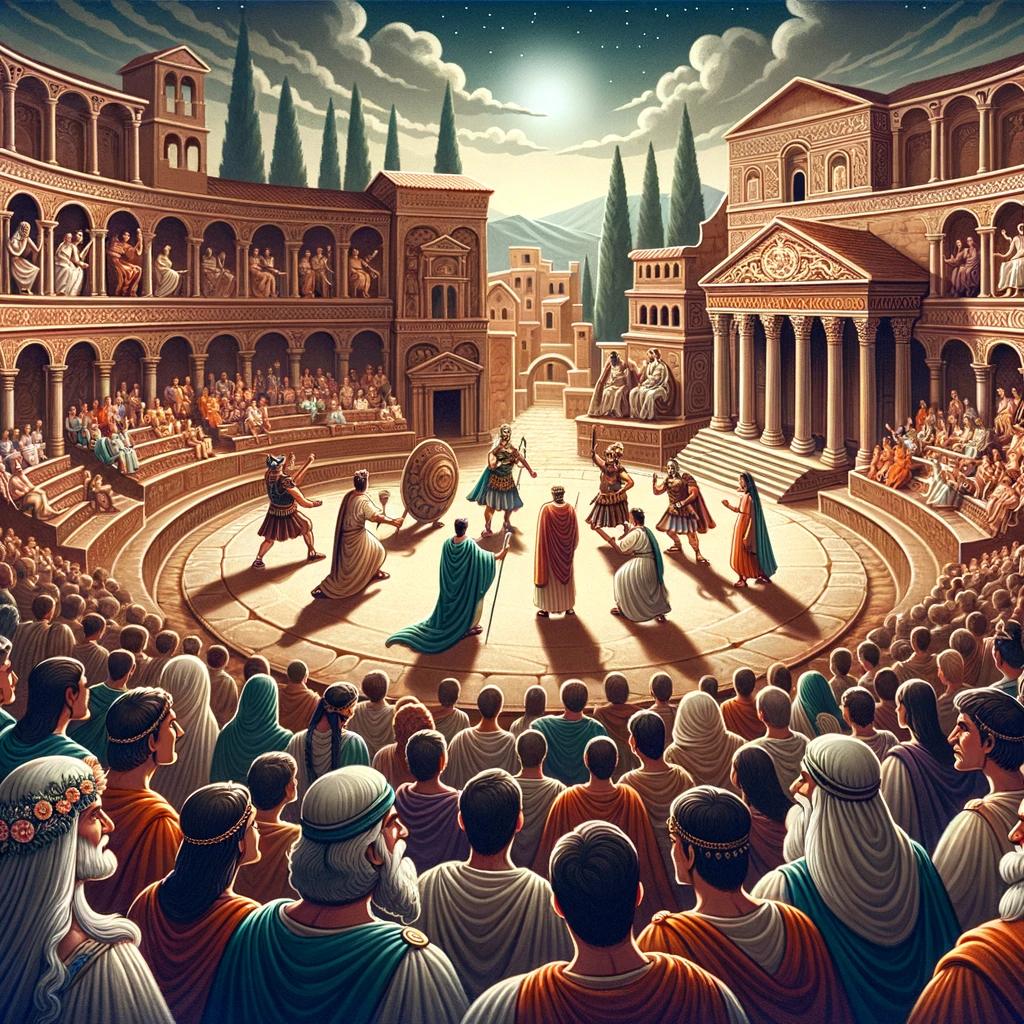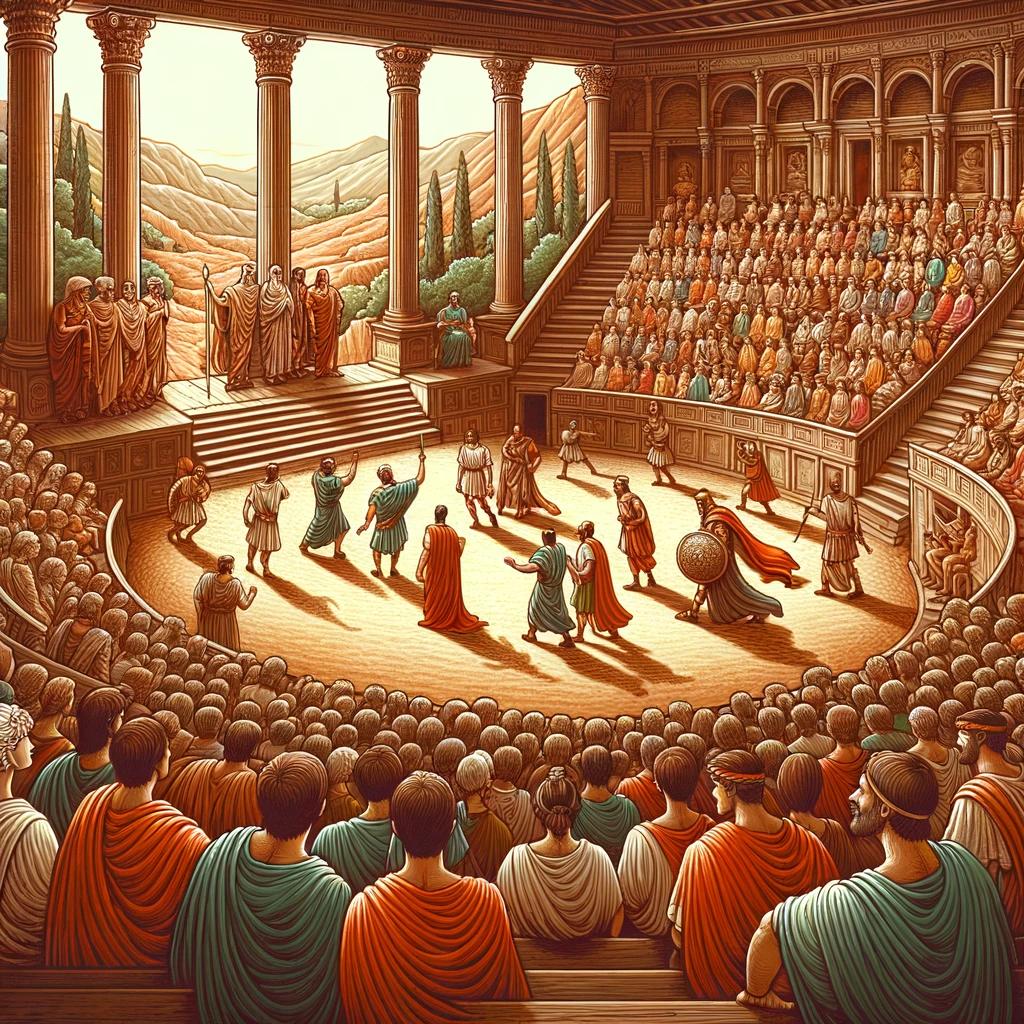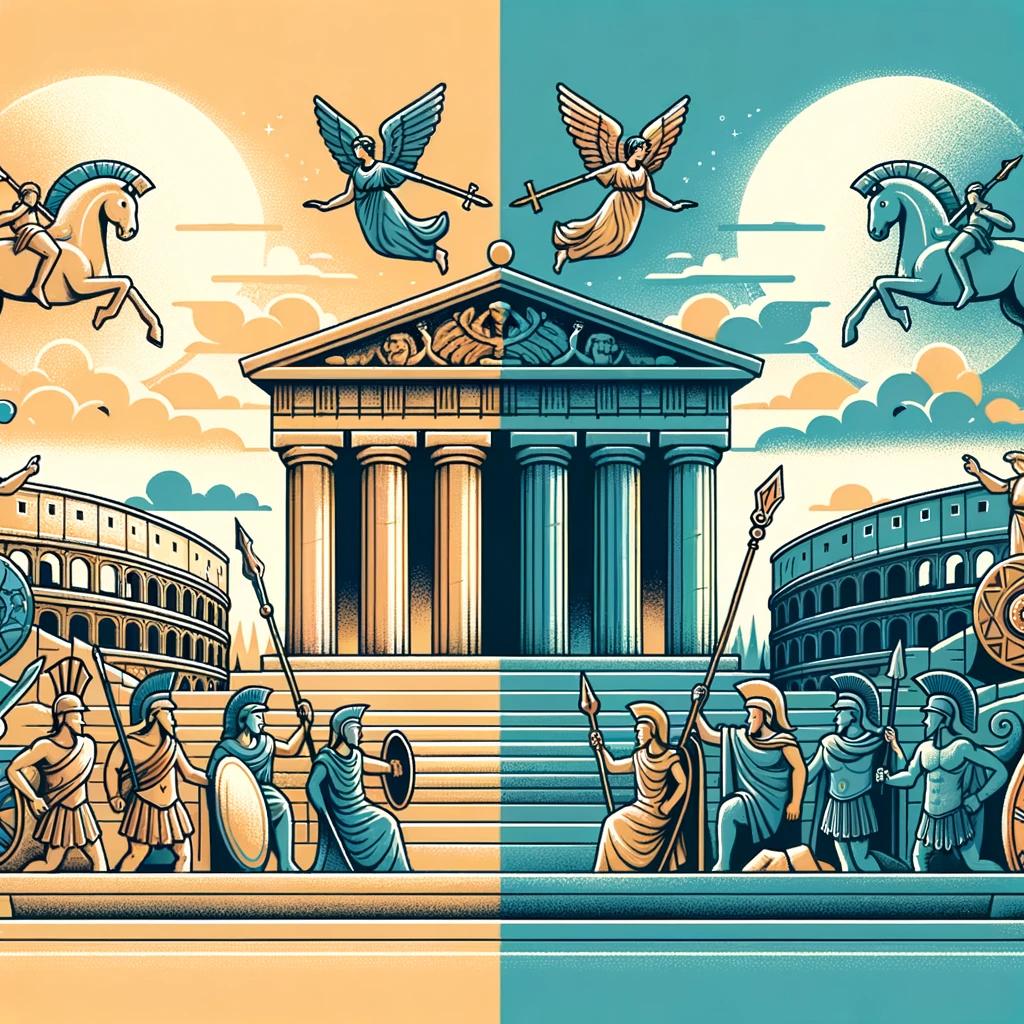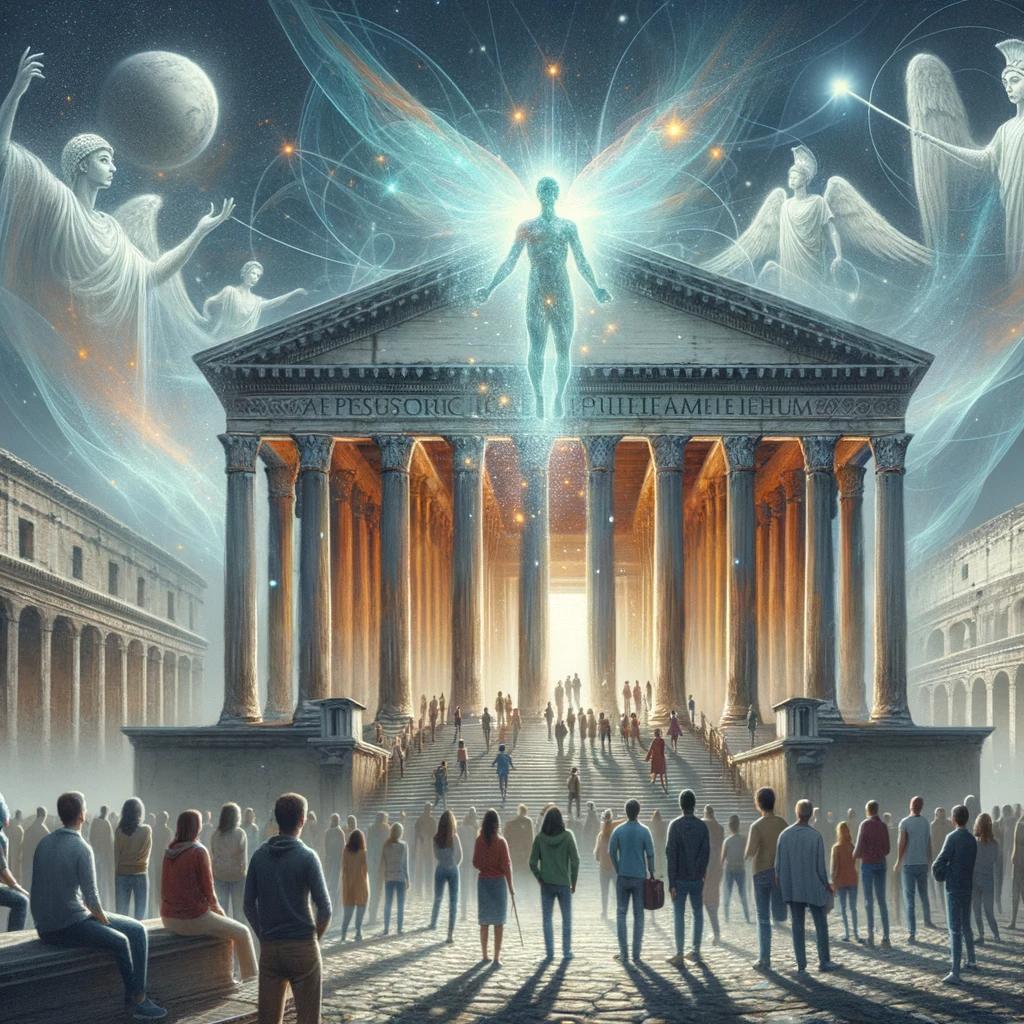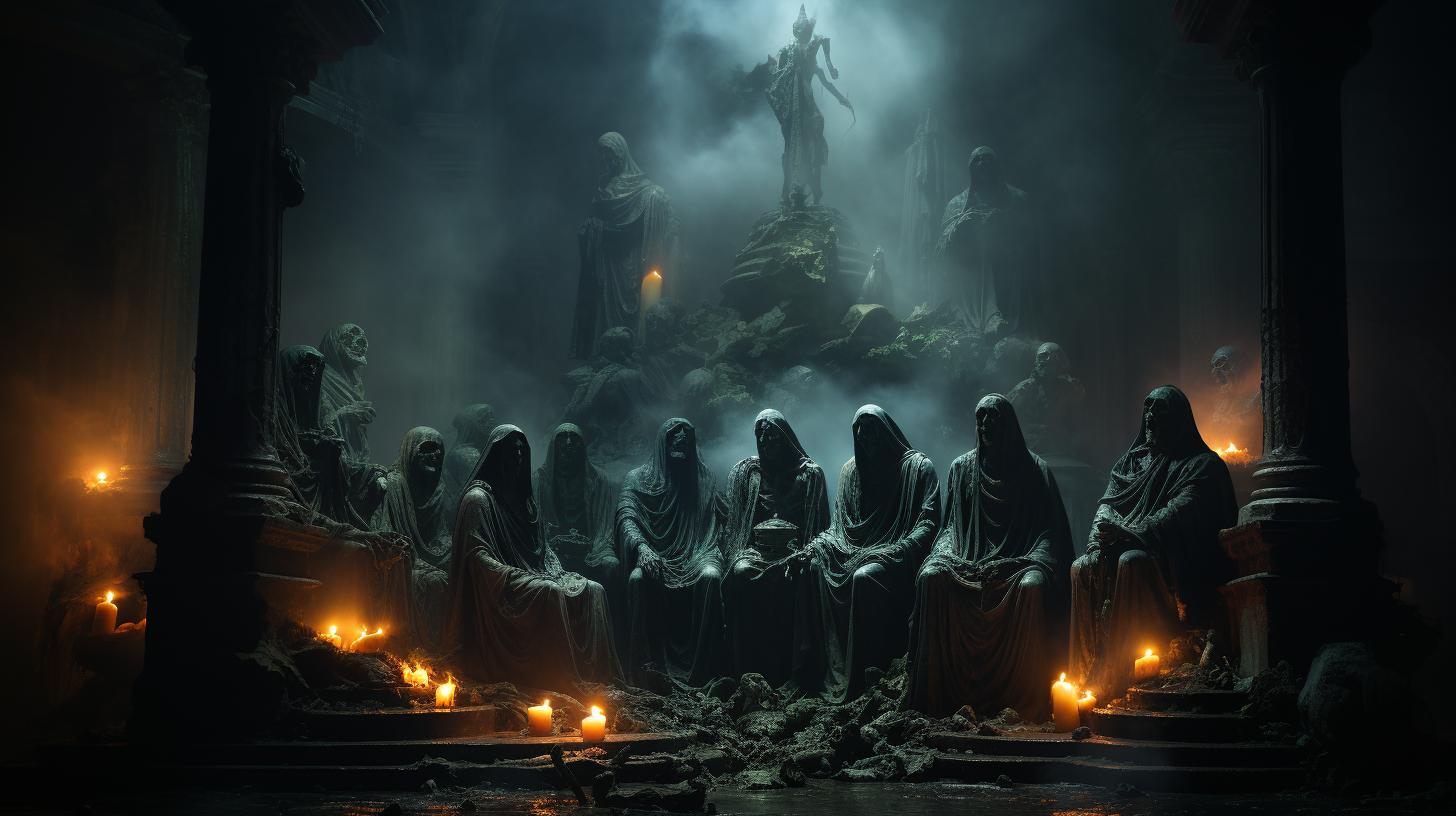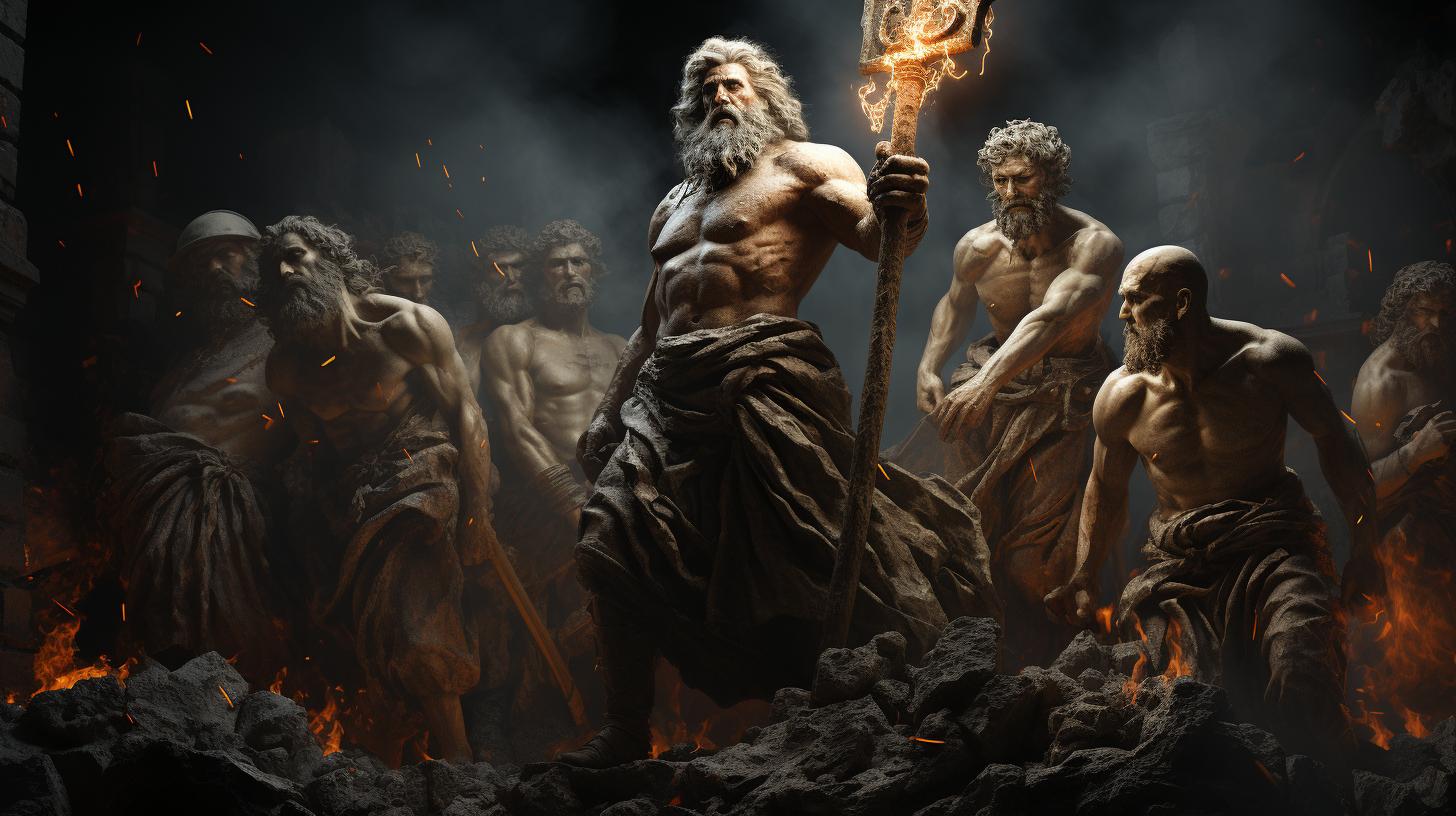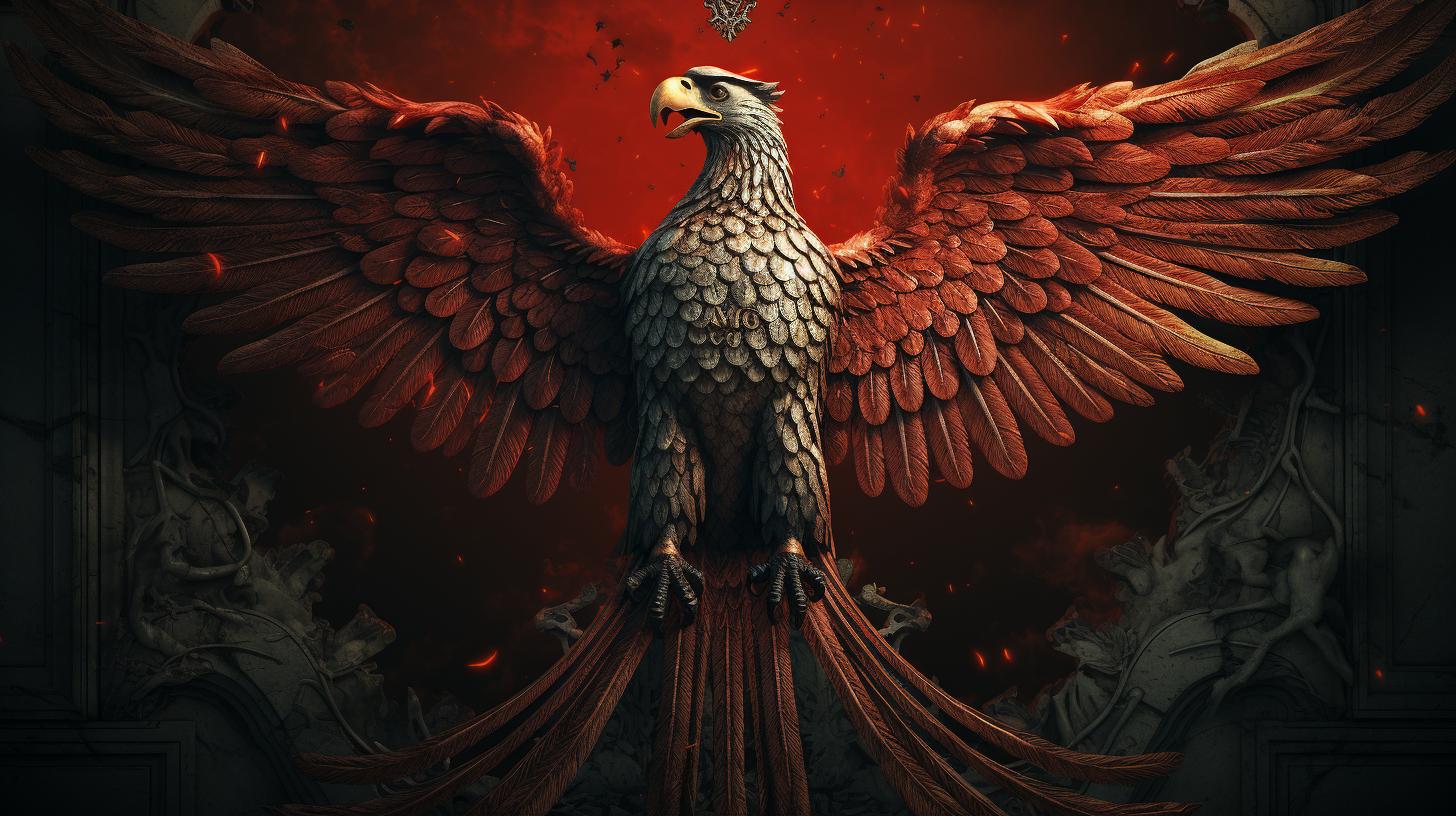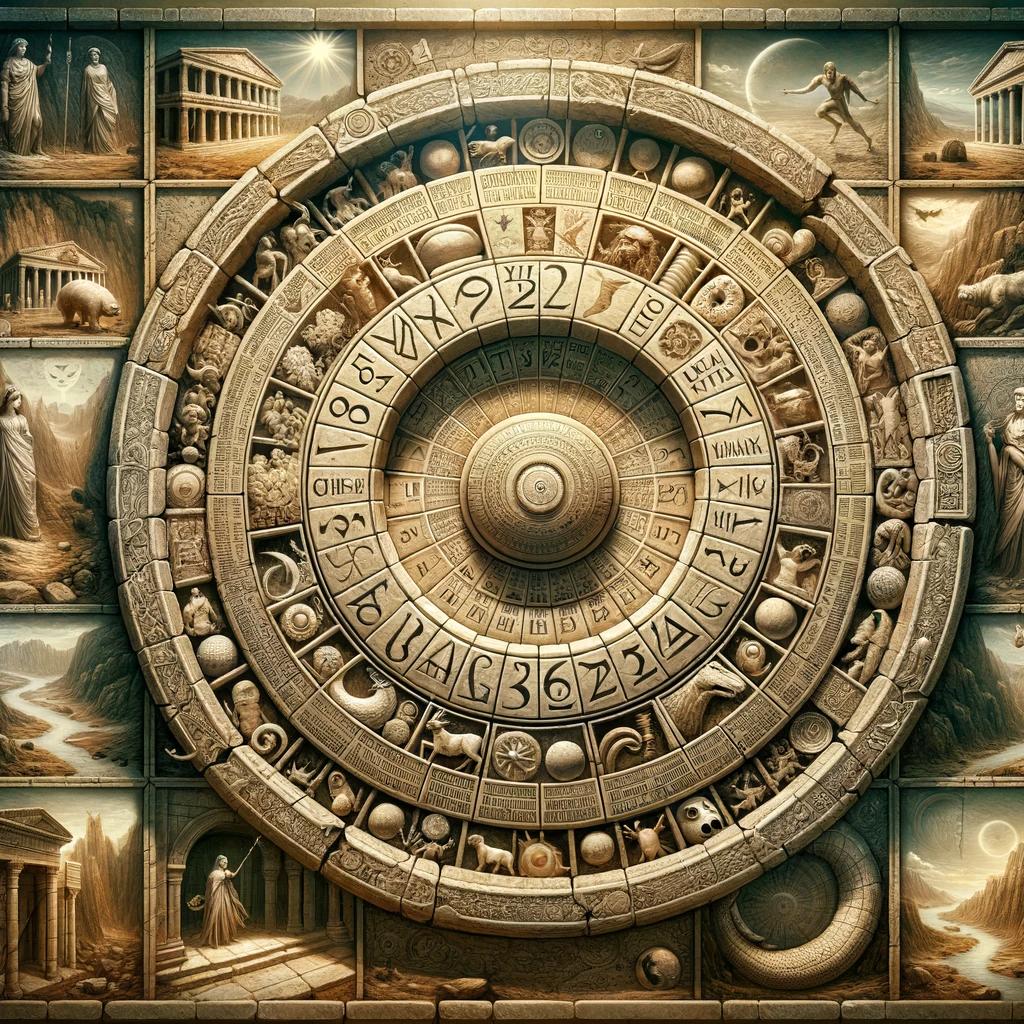How Did Roman Mythology End: Unraveling the Transition in Ancient Rome
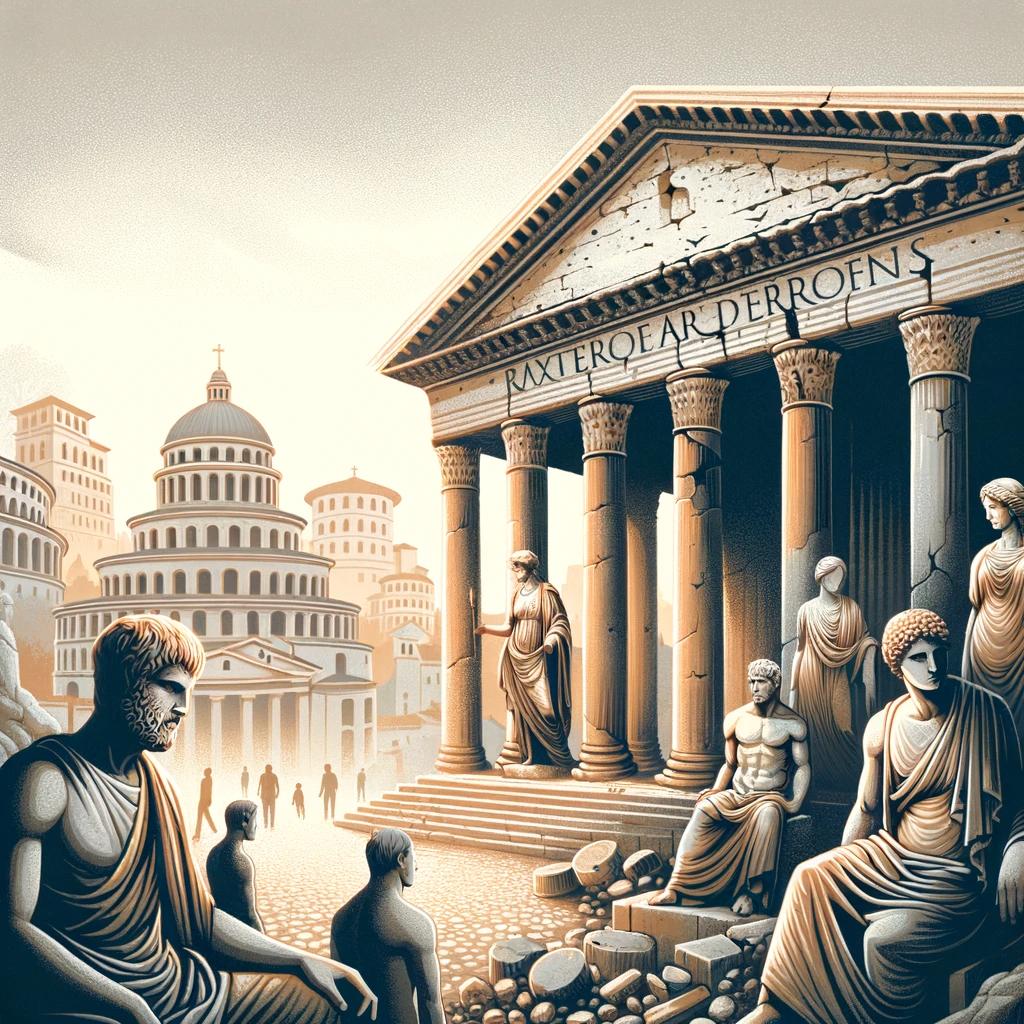
The article provides a concise exploration of how Roman mythology came to an end. It delves into the transition from Roman gods to Christianity, the closure of pagan temples, the persistence of paganism in rural communities, and the incorporation of pagan elements in Christian practices.
The article also discusses the continuation of Roman mythology in Western Europe, the survival of Roman gods in local folklore, and the role of neopaganism today. Explore the fascinating journey of Roman mythology and its eventual decline in this comprehensive article.
The Roman Empire and its State Religion
The Roman Empire, a vast and powerful civilization, had a complex religious system deeply intertwined with its political and social structures. Roman mythology and the worship of gods played a central role in the life of the Empire, shaping its values, customs, and traditions.
The Role of Roman Gods in the Empire
Roman gods held a position of immense significance in the daily lives of the Romans. Each deity represented different aspects of the natural world, society, and human experiences. Jupiter, the king of gods, symbolized power and protection, while Venus embodied love and beauty.
The gods were not only worshipped in temples but also revered in public spaces and celebrated through various festivals and rituals.
The Rise of Christianity
However, the Roman Empire underwent a significant transformation with the rise of Christianity. As the new religious movement gained followers and influence, it challenged the dominance of the Roman gods. The teachings of Jesus Christ and the spread of Christian communities across the Empire brought about a seismic shift in the religious landscape.
Constantine and the Edict of Milan
A pivotal moment in this transformation occurred under the reign of Emperor Constantine. With the Edict of Milan in 313 AD, Constantine proclaimed religious tolerance, effectively granting Christians the freedom to worship openly.
This edict marked the beginning of Christianity’s recognition and acceptance within the Roman Empire.
Impact of Christianity on Roman Religion
As Christianity gained momentum, it gradually eroded the influence of Roman mythology. The teachings of monotheism and the exclusive worship of the Christian God clashed with the polytheistic beliefs of Roman religion.
Christian values, moral codes, and practices began to permeate Roman society, challenging the authority of the traditional gods.
In conclusion, the Roman Empire’s state religion revolved around the worship of gods, with their roles deeply embedded in the social fabric.
However, the rise of Christianity and the edict of tolerance issued by Constantine brought about profound changes, leading to a gradual shift away from Roman mythology. The empire’s religious landscape was transforming, setting the stage for the decline of Roman mythology and the eventual emergence of Christianity as the dominant faith.
The Decline of Roman Mythology
The ancient Roman Empire witnessed a gradual decline in the practice and belief of Roman mythology as Christianity gained prominence. This section explores the factors that contributed to this decline, including the closure of pagan temples and the persistence of paganism in rural communities.
Closure of Pagan Temples
As Christianity became the official religion of the Roman Empire, the closure of pagan temples became more prevalent. The edict of Constantine, known as the Edict of Milan, in 313 AD, marked a turning point in the religious landscape.
Many pagan temples were either closed or destroyed in the centuries that followed. These closures had a significant impact on the availability and accessibility of Roman religious practices.
Persistence of Paganism in Rural Communities
Despite the rise of Christianity, pagan beliefs continued to persist, particularly in rural areas of Western Europe.
The term “pagan” itself originates from the Latin word “paganus,” meaning “of the countryside.” Paganism remained a part of the cultural fabric in these communities, intertwined with daily life and traditions.
In these rural areas, people held onto their traditional beliefs, rituals, and reverence for the gods of Roman mythology. Although Christianity became dominant on a political level, the practices associated with Roman gods endured amongst the common folk.
It is important to note that the persistence of paganism varied across different regions and communities, and the level of integration with Christianity also varied.
In conclusion, the decline of Roman mythology was marked by the closure of pagan temples and the persistence of paganism in rural communities.
The official adoption of Christianity as the state religion shifted the religious landscape, but elements of Roman mythology continued to survive in local traditions and folklore.
Transition and Persistence in the Late Roman Empire
During the Late Roman Empire, a period of significant religious transformation took place as Christianity gained prominence.
Amidst this transition, various belief systems coexisted, reflecting the diverse spiritual landscape of the time.
Various Belief Systems in Late Rome
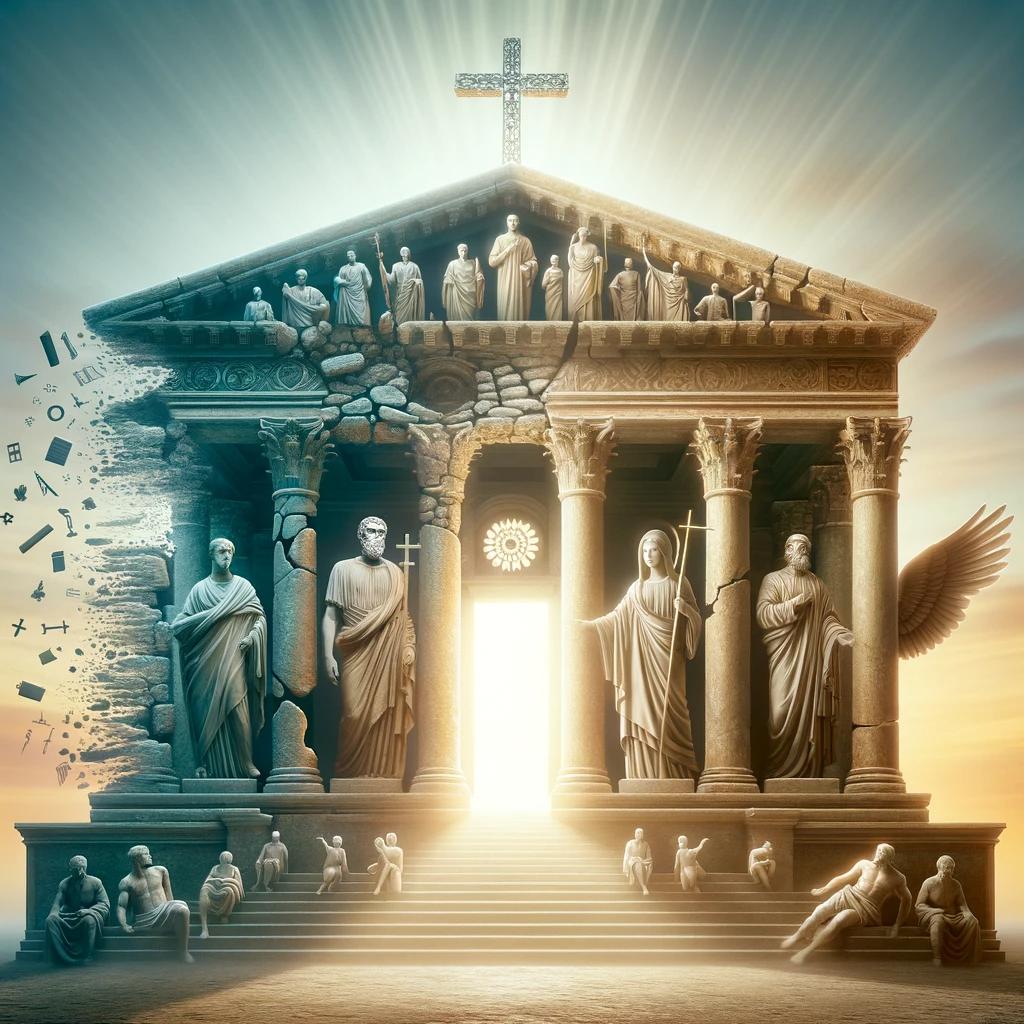
In the Late Roman Empire, belief systems extended beyond just Roman mythology and Christianity. Elements of Greek mythology, Egyptian cults, and other regional religions could still be found. This pluralistic religious environment led to a hybridization of religious practices and beliefs.
As the Roman Empire expanded, it encountered and absorbed diverse cultures, incorporating their gods and rituals into their own religious tapestry. The people of Late Rome often practiced syncretism, blending different religious traditions to form a unique blend of beliefs.
Incorporation of Pagan Elements in Christian Practices
As Christianity became the dominant religion, efforts were made to ease the transition and accommodate traditional practices. Pagan elements and rituals were incorporated into Christian practices to attract and appease the adherents of Roman mythology.
The use of sacred sites, symbols, and even the repurposing of pagan temples for Christian worship were common strategies. This served to facilitate the conversion of the Roman population and ensure a smoother religious transition.
Over time, as Christianity further established its influence, these syncretic practices diminished, and the prevalence of purely pagan rituals waned. However, traces of Roman mythology continued to exist in folklore and local traditions, providing glimpses of the persistence of ancient beliefs in the Late Roman Empire.
- Hybridization of religious practices led to a diverse spiritual landscape in Late Rome.
- Belief systems in the Late Roman Empire extended beyond Roman mythology and Christianity.
- Syncretism played a significant role in blending various religious traditions.
- Pagan elements were incorporated into Christian practices to ease the transition.
- The use of sacred sites and repurposing of pagan temples helped bridge the gap.
- Over time, syncretic practices diminished as Christianity solidified its influence.
- Traces of Roman mythology persisted in folklore and local traditions.
As the Late Roman Empire witnessed the emergence of Christianity as the dominant religion, it also experienced a transformation in belief systems.
The coexistence of various religious traditions and the incorporation of pagan elements into Christian practices defined this transitional period. The blend of ancient beliefs and emerging faiths added complexity to the spiritual landscape of the time, contributing to the persistence of Roman mythology in unique ways.
Continuation of Roman Mythology in the Fifth Century and Beyond
As the Roman Empire entered the fifth century and beyond, the influence of Roman mythology started to wane, but it persisted in various forms, particularly in Western Europe. This section explores two significant aspects of the continuation of Roman mythology during this period: pagan traditions in Western Europe and the survival of Roman gods in local folklore.
Pagan Traditions in Western Europe
In Western Europe, despite the increasing dominance of Christianity, vestiges of Roman mythology continued to have a notable presence. Pagan practices and beliefs were intertwined with cultural traditions in rural communities, where ancient customs and rituals persisted.
- Pilgrimages to sacred sites: People continued to visit and venerate natural landmarks and sacred places associated with Roman gods, seeking blessings and protection.
- Seasonal festivals: Many pagan festivals, with roots in Roman mythology, endured and were integrated into the Christian calendar.
These celebrations often involved rituals associated with agricultural cycles and fertility, such as the celebration of the harvest.
- Folk remedies and superstitions: The belief in the protective and healing powers of certain herbs, amulets, and charms, rooted in Roman mythology, remained prevalent in rural communities.
Survival of Roman Gods in Local Folklore
The gods of ancient Rome found their way into the rich tapestry of local folklore, preserving elements of Roman mythology even as Christianity became the dominant religion.
Roman gods were often incorporated into local legends, folk tales, and oral traditions, providing a link to the past and emphasizing their enduring significance.
- Stories and legends: Tales featuring Roman gods and goddesses were passed down through generations, intertwining with local myths and legends.
These stories often incorporated moral lessons and reflected a blend of pre-Christian beliefs with Christian influences.
- Place names and landmarks: Roman deities influenced the names given to geographical features, such as rivers, mountains, and forests.
These names served as reminders of their ancient connections and the lasting impact of Roman mythology.
- Art and symbolism: Iconography associated with Roman gods appeared in local art forms, such as paintings, sculptures, and tapestries.
These artistic expressions showcased the continued reverence and fascination with the divine figures of the Roman pantheon.
In conclusion, the fifth century and beyond witnessed the continuation of Roman mythology in Western Europe through pagan traditions in rural communities and the integration of Roman gods into local folklore.
Despite the rise of Christianity, the remnants of Roman mythology persisted and created a unique blend of cultural heritage that echoes through the ages.
The Role of Neopaganism in Modern Times
Neopaganism, a revival of ancient religious practices, has gained significant attention in recent years.
As a part of this broader movement, the worship of ancient Roman gods has experienced a resurgence. Many individuals have been drawn to the allure of the mysterious and magical aspects of Roman mythology, seeking a connection with the past and a way to explore spirituality outside traditional religious frameworks.
Neopagan Revival
The neopagan revival, rooted in the 20th century, has provided a platform for enthusiasts to explore and revive ancient Roman religious beliefs and practices. Neopagans draw inspiration from historical records, literary sources, and archaeological findings, reconstructing rituals and ceremonies to honor the Roman deities.
With a focus on authenticity, these worshipers strive to recreate the essence of Roman mythology as accurately as possible.
The Worship of Ancient Roman Gods
Neopagans who follow the worship of ancient Roman gods, often called Roman Reconstructionists, engage in a variety of rituals to connect with these ancient deities. These practices typically involve offerings, prayers, and ceremonial acts performed in honor of specific gods and goddesses such as Jupiter, Mars, Venus, and Diana.
- Offerings: Worshipers make offerings to the gods in the form of food, drink, flowers, or other symbolic items.
These offerings are seen as gestures of reverence and gratitude.
- Prayers and Invocations: Neopagans recite prayers or invocations to invoke the presence and favor of the Roman gods. These words carry deep spiritual meaning and serve as a way to connect with the divine.
- Ceremonial Acts: Rituals often involve symbolic gestures, such as pouring libations, wearing specific garments, or performing dances and songs associated with the ancient Roman culture.
Through these practices, neopagans seek a personal connection with the gods, embracing a form of spirituality that resonates with their individual beliefs and experiences.
While neopaganism is still considered a niche movement, it has attracted a devoted following of individuals fascinated by the ancient world and the spiritual wisdom it offers.
.











